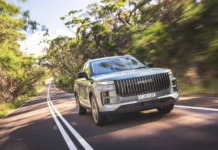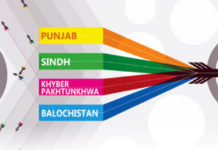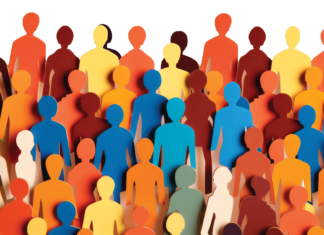When it comes to advertising, creativity is the number one brand asset you have control over. But even though it is one of the most important drivers of growth, it is often at risk of being under-valued. A lot of people think that the main purpose of creativity is to gain attention, particularly in the context of skippable advertising, but that’s not creativity’s most important role. It’s not just about gaining attention, it’s about creating lasting memories that will stick to the brand.
In an effort to help transform good creative communication into great creative communication, Kantar has identified five elements that most appeal to the Pakistani audience. It has also shared global creativity tips from the top-performing ads in Kantar’s Creative Effectiveness Awards from this year.
What is Kantar? It is the world’s leading evidence-based insights and consulting company. We have a complete, unique and rounded understanding of how people think, feel and act; globally and locally in over 90 markets. By combining the deep expertise of our people, our data resources and benchmarks, our innovative analytics and technology we help our clients understand people and inspire growth.
In order to share specific Pakistani insights about advertising that creates these lasting impressions, Kantar used their copy-testing solution, Link, to test 73 local ads from 2019 onwards, while also factoring in recent consumer sentiment to advertising, especially in the wake of Covid-19.
The findings from Kantar’s study? Audiences don’t want brands to exploit the pandemic in their communications. Kantar’s syndicated Covid-19 Barometer study, that tracks how Covid-19 is influencing connected consumer behaviour, attitudes and expectations in over 60 markets, reveals that just 8% of consumers believe companies should stop advertising during this time.
This makes even more sense when you consider that TV viewing, social networking and web browsing activity have all increased in the region of 50% over the past few months, as a result of lockdown living. So, rather than giving it a rest, it’s time to rethink and refresh your brand communication.
5 essentials to creating strong brand ads in Pakistan
- Traditional portrayal of protagonist, with a hint of modernity
Pakistanis strongly value tradition, passed down through the generations and want to see this in advertisements’ character portrayal, extending from traditional attire to the roles they play. But these characters also need to be empowered, forward-thinking and confident, showing a progressive mindset in terms of family matters and society. It’s an interesting dichotomy, but top-performing ads, like Shan’s ‘More than just a cook’ campaign maintain this contrast between tradition and progressive thinking. From a qualitative perspective, the traditional aspect is boosted when depicting mothers as confident solution-providers and caretakers for their children, but there’s an opportunity to portray a woman’s identity beyond her duties and appearance, as a meaningful contributor in society or her family. A prime example is Dettol, which does this well.
- Elements of enjoyment play a prominent role
The challenging economic environment has made it difficult to make ends meet, with many turning to additional sources of income such as part-time teaching and freelancing after-hours. This leaves limited time for leisure, so TV-watching becomes a means of escape and even catharsis. In Pakistan, advertising is considered more enjoyable when it features children adding colour to the household, with supportive dynamics between protagonists and other characters. Prominent music featuring lyrics, especially created or adapted for the brand, also appeals. Nestle’s Lactogrow ad successfully incorporates these elements.
But despite all the social media buzz, influencers lie on the other end of the ad-enjoyment scale, especially when the same celebrities are used repeatedly by different brands in different ads. This ends up dampening the strength of the brand message while enhancing the celebrity’s staying power. Actress Mahira Khan is living proof of this, as she dominates the Pakistani beauty category, having served as a brand ambassador not only for Lux but also Veet and even L’Oreal Paris. That is in addition to serving as the face of Gai washing powder, a host of Samsung electronics and even Nescafé instant coffee. Sure, it’s obviously an ad featuring Mahira Khan, but can you remember what brand it was selling without a prop or logo on screen to jog your memory?
One way touted by many to make ads fun is making them funny. But funny is rarely easy, especially when you have to tailor it in accordance with your company’s brand image. When it comes to humour, brands have to work hard to ensure the humour matches the brand personality and does not overshadow the brand narrative.
- Value for money, conveyed via functionality
With wallets under more pressure than ever before, Pakistanis are looking for practical products. They want a feel for the product’s functionality, innovation and benefits before they buy into the brand. However, ads that deliver an explicit message won’t benefit brands to the same degree as an ad focused on building impressions. So when there is a need to reinforce functional benefits, it is key to deliver the message in a creative way. In general, the same rule as any good writing applies: show don’t tell. People tend not to remember explicit messages without lots of repetition but a creative demonstration will help improve memorability, and you should ensure that there is a clear message about the product benefit. Think about adding an element of product romancing by showing the protagonist having fun with or enjoying using the product.
- Consistency and simplicity
As the marketing landscape is saturated, it is difficult to break through the clutter. With viewers exposed to multiple product options on a daily basis, making purchase decisions can be overwhelming. They take the least demanding course of action as they just don’t have the time or energy to think through the pros and cons of every decision. That is why brands need to consistently use branded elements in all communications. These serve as mental short-cuts that create instant meaning, maximising their chance of being chosen. The more associations a brand has in people’s minds, the more likely they are to choose it. These range from jingles specifically created for ads, to slogans and functional aspects like the brand’s trademark, or characters and mascots. Coca-Cola consistently makes use of brand cues in its advertisements, taking this a step further to localise them for maximum impact.
- An overarching, predominant brand story
As a nation of storytellers, born from our folklore culture, we find personal, humanised stories easy to relate to – everyone loves a good story. Stories are the reason we stay up late to finish a book, watch a movie or binge watch shows on Netflix. According to Jonathan Gottschall, author of ’The storytelling animal: how stories make us human,’ says that we as a species are addicted to stories. “Even when the body goes to sleep, the mind stays up all night, telling itself stories,” he writes.
Stories can be very powerful for brands. They present an opportunity to engage audiences, to leave lasting memories, and to provoke emotional responses. Ads that use storytelling are move involving, more noticeable and more memorable, all of which contribute to sales.
This fuels the need for powerful narrative in ads, built around a brand with a prominent role to play in the story’s development. The brand should be so essential to the ad that viewers feel: “I can’t explain the ad to somebody without mentioning the brand name.” Nestlé Nesfruta does so by making the brand central to the story, while Sprite succeeds with the “brand is hero” story template, where a problem is introduced purely to be solved by the brand’s functionality.
Creativity tips from Kantar’s Global Creative Effectiveness Awards
Kantar’s inaugural Creative Effectiveness Awards celebrated ads that both sell products in the short term, and build brand equity in the long term by conveying long-lasting, meaningfully different impressions. A stand-out factor is that these are the best-performing global ads as judged by consumers, rather than the advertising industry, on short-term and long-term effectiveness across digital, static (print and out-of-home or OOH) and TV, with 30 winners across 13 markets where the content was tested.
The digital awards celebrate creative content that not only makes people stop what they are doing and pay attention to the ad, but also contributes to the brand in both the short and long term. Milka’s ‘The Unsung Hero’, the touching story centring around a strong, seasonally relevant message of thoughtful gifting, in keeping with the Christmas tradition, came out on top in the awards. Created in partnership with The European Union of the Deaf, it promotes inclusion and generates a strong emotional response.
Winners from the TV category demonstrate the continued sales-generating and brand-building ability of broadcast content, with the overall winner – BP’s Blind Date – adding engagement with humour, in an amusing story where the brand plays a strong role. This made it not only entertaining but also stand out from the rest of the advertising for this category, due to the distinctive approach taken.
Of course, as Global Head of Creative for Kantar, Daren Poole, points out, there is no ‘one-size-fits-all’ approach to creating great advertising content. To leave a lasting impression in an effective way, you need to take a disciplined approach to creative development, with clear objectives and genuine insights that drive a focused brief. Only then does the magic begin. But there are some takeaways that might benefit advertisers.
These are some of the stand-out themes that the best, award-winning works had in common:
- In a world flooded with content, distinctiveness attracts attention
Create something out of-the-ordinary to capture attention and leave a lasting impression with distinctive assets woven into emotional storytelling or the engaging presentation of a product or feature.
- More uplifting, less ‘sadvertising’
Many of the winning ads feature uplifting tonality. Raising a smile goes a long way in effectively creating emotional engagement. Meanwhile, sad messages are an easy hack to get an emotional response, and never as effective as uplifting adverts.
- Cultural relevance is important
Cultural context determines what works well at a market level, especially where people recognise the message and other brand cues instantly.
- Authentic purpose that fits with the brand
Purpose alone won’t drive benefits for a brand’s long-term equity – having an authentic fit with what the brand is saying, will.
- Innovation is not a crutch
Top-performing ads can deliver ‘new news’ for a brand, but rarely rely on the innovation alone or explicit messaging about what’s new.
- Short doesn’t have to mean short-term thinking
Shorter creative work stands a better chance of being viewed in the digital context and can be just as creative and effective.























Interesting and insightful content on advertising research. Indeed, in the advertising world, the message and the copy play the dominant role. And in the copy, bringing the creativity through a short storyline with an emotional appeal can trump everything else.
It’s not about the noisy ads, its about those few ads which touch your inner chords and make a difference.
Well, such educated research pieces done by Kantar definitely help to educate the advertisers and the advertising industry at large.